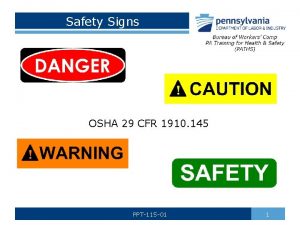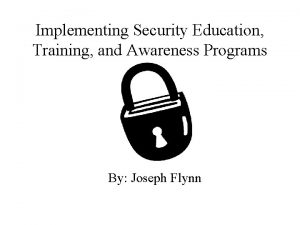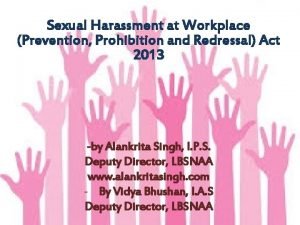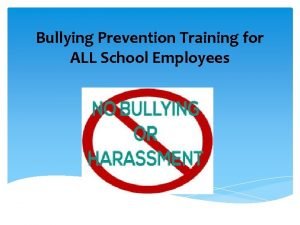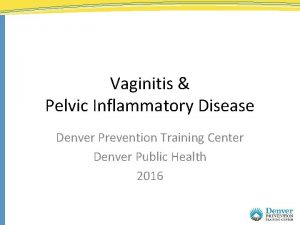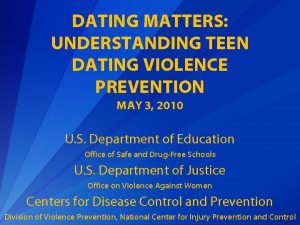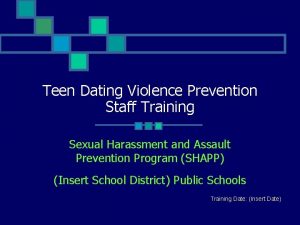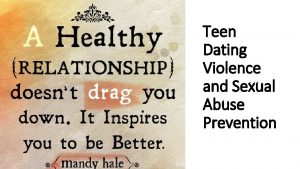Teen Dating Violence Awareness and Prevention Training WHITE

















- Slides: 17

Teen Dating Violence Awareness and Prevention Training WHITE SETTLEMENT ISD AN OVERVIEW OF STATISTICS, RISKFACTORS, AND PREVENTION STRATEGIES.

What is Teen Dating Violence? �A pattern of controlling behavior that someone uses against a girlfriend or a boyfriend. The core of dating violence is Power and Control. �Includes stalking, verbal, physical, sexual, emotional/psychological abuse �Can be in the form of sexual coercion, peer pressure, forced isolation, threatening, angry outbursts, minimizing, denying, blaming �Official definition can be found under Dating Violence (Texas Family Code 71. 0021)

Defining Abusive Behaviors � Stalking - This refers to a pattern of harassing or threatening tactics that are unwanted and cause fear in the victim. � Sexual Coercion – Verbally manipulating a partner into agreeing to perform sexual acts against their desire. � Sexual Abuse - This is forcing a partner to engage in a sex act when he or she does not or cannot consent. This can be physical or nonphysical, like threatening to spread rumors if a partner refuses to have sex. � Manipulated/Forced Isolation – Manipulating a partner to withdraw and spend less time with their friends/family in order to control their behavior and gain power. “Do you have to go to your friends house, I wanted to spend time with you, I should be more important than your friends. ”

Defining Abusive Behaviors Continued �Threatening - “I love you so much that I don’t want to live without you. I’ll kill myself if you leave. ” �Minimizing/denying/blaming – “I didn’t mean to hurt you; It could be much worse than this; You made me upset; I did that because you made me mad; You deserved it” �Physical abuse - This occurs when a partner is pinched, hit, shoved, slapped, punched, or kicked. �Psychological/Emotional abuse - This means threatening a partner or harming his or her sense of self-worth. Examples include name calling, shaming, bullying, embarrassing on purpose, or keeping him/her away from friends and family.

Teen Dating Violence: Myths vs. Facts � MYTH: If a person stays in an abusive relationship, it must not really be that bad. � FACT: People stay in abusive relationships for a number of reasons: fear, economic dependence, confusion, loss of self-confidence, not recognizing that what’s happening is abusive, belief that the abuser needs their help or will change. � MYTH: Women are victims of violence more often than men � FACT: The U. S. Bureau of Justice Statistics reports that 95% of the reported incidents of assaults in relationships are committed by males. Many male victims do not report abuse. � MYTH: Jealousy and possessiveness are a sign of true love. � FACT: Jealousy and possessiveness are a sign that the person sees you as a possession. It is the most common early warning sign of abuse.

Teen Dating Violence and Technology � TECHNOLOGY IS A MEANS OF CONSTANT CONTROL � 1 in 3 teens say they are texted 10, 20, 30 times an hour by a partner keeping tabs on them � 68% of teens say boyfriends/girlfriends sharing private or embarrassing pictures/videos on cell phones and computers is a serious problem � 1 in 4 teens in a relationship say they have been called names, harassed, or put down by their partner through cell phones & texting. � 19% of teens in relationships say their partner has used a cellular device or the internet to spread rumors about � Nearly 1 in 4 teens in a relationship communicated with their partner via cell phone or texting HOURLY between 12 am & 5 am � 71% of teens regard boyfriends/girlfriends spreading rumors about them on cell phones and social networking sites as a serious problem.

Teen Dating Violence and Technology Digital Disrespect � Bad mouthing through social networking sites, text messages, IMs, or other forms of technology � Constant messaging / threatening text messages � Obsessively texting to keep track of whereabouts, asking things like “what are you doing? ”, “Who are you with? ”, “When are you going home? ” etc. Holding you on the phone when you are ready to stop talking. Requesting calls/texts when leaving or going places. � Threatening is used as a way to manipulate and control situations.

Teen Dating Violence and Technology Online Stalking �Spying and keeping track through social networking pages �Threatening to share pictures �Sexting (sending sexually suggestive or nude photos through technology) may seem harmless but it can be used as a form of control when someone threatens to share or expose the images. �Impersonating through social networking �Using someone’s username and password to get into their account, Creating a fake pages, etc.

Teen Dating Violence Statistics

Teen Dating Violence Statistics �Among high school students who dated, 21% of females and 10% of males experienced physical and/ or sexual dating violence. �Among adult victims of rape, physical violence, and/ or stalking by an intimate partner, 22% of women and 15% of men first experienced some form of partner violence between 11 and 17 years of age. � 60% of Texas females (not just teens) surveyed experienced dating violence of some kind: � verbal abuse � physical violence � sexual violence

Common Effects of Teen Dating Violence � DEPRESSION � FEELINGS OF SUICIDE � USING DRUGS AND ALCOHOL � DEVELOPING POOR EATING HABITS � LOSING SELF-ESTEEM � SELF BLAMING � FEELINGS OF CONFUSION � LOSING FOCUS � FEELINGS OF SHAME AND EMBARRASSMENT � FEELINGS OF ISOLATION � GIVING UP ALL SOCIAL AND SCHOOL ACTIVITIES � NEEDING CONSTANT VALIDATION AND REASSURANCE

Why is it important to recognize and address TDV in schools? • Approximately 43% of teen dating violence victims reported that the dating abuse they experienced occurred in a school building or on school grounds (C. Molidor, R. M. Tolman, 1998). • 20% of students impacted by violence find it hard to pay attention in school (American Association of University Women Educational Foundation) • 16% find it hard to study (American Association of University Women Educational Foundation) • Girls with a history of physical and sexual dating violence are significantly more likely to: Engage in substance abuse (binge drinking, cocaine use, smoking, and unhealthy weightcontrol behaviors) Engage in risky sexual behavior before age 15 Have multiple sexual partners To have been pregnant (4 -6 times more likely than non-abused peers) To have attempted suicide during the previous year (8 -9 times more likely than non-abused peers)

House Bill 121 • The Texas Legislature has passed, and Governor Perry has signed, an act requiring each school district in Texas to adopt and implement a dating violence policy. • Each school district’s dating violence policy must: – include a definition of dating violence – address safety planning – include enforcement of protective orders – include school-based alternatives to protective orders – address training for teachers and administrators – address counseling for affected students – include awareness education for students and parents.

How can this problem be addressed? Let students know that they can talk to the counselors/social worker about dating and relationships. Refer students to counselor. - Counselors will do a risk assessment and safety plan with student, inform parents, etc. • Utilize local resources such as domestic violence and sexual assault centers. • Discuss how to break up safely �Avoid being alone with abuser �Make it clear that relationship is over �Be cautious and report stalking or threats �Create a support system

If you suspect abuse: National Teen Dating Abuse Helpline 1 -(866) 331 -9474, www. loveisrespect. org

Resources on Teen Dating Violence � Texas Governor’s Commission for Women www. governor. state. tx. us/divisions/women/work/violence/t oolkit � Texas Council on Family Violence Red Flags Project www. knowtheredflags. com www. tcfv. org � Dating Violence Resource Center, National Center for Victims of Crime www. ncvc. org/ncvc/main. aspx? db. ID=DB_Dating. Violence. Re source. Center 101 � National Youth Violence Prevention Resource Center www. safeyouth. org/scripts/teens/dating. asp � Choose Respect, Centers for Disease Control and Prevention www. chooserespect. org � The Expect Respect Program Manual, Safe. Place www. austinsafeplace. org

Resources on Teen Dating Violence � Teen Action Campaign www. seeitandstopit. org � Liz Claiborne http: //www. loveisnotabuse. com/home. asp � Family Violence Prevention Fund http: //endabuse. org/programs/teens/ � Texas Association Against Sexual Assault: STAR Program www. taasa. org/star � Texas Advocacy Project: Teen Justice Initiative www. texasadvocacyproject. org
 Primary prevention secondary prevention tertiary prevention
Primary prevention secondary prevention tertiary prevention Whitchester house
Whitchester house Privacy awareness and hipaa privacy training cvs
Privacy awareness and hipaa privacy training cvs Obj dating
Obj dating Spill prevention plan template
Spill prevention plan template Osha safety signs and symbols
Osha safety signs and symbols Seta security education training awareness
Seta security education training awareness Suspicious packages training
Suspicious packages training Hipaa privacy and security awareness training
Hipaa privacy and security awareness training Alankrita singh ips
Alankrita singh ips Jamari terrell williams
Jamari terrell williams Sexual abuse awareness training quiz answers
Sexual abuse awareness training quiz answers Spill prevention control & countermeasures training
Spill prevention control & countermeasures training Robbery awareness
Robbery awareness Army suicide prevention training
Army suicide prevention training Grace alfonsi md
Grace alfonsi md Iso 9001:2015 awareness presentation ppt
Iso 9001:2015 awareness presentation ppt Cjis policy and security awareness test
Cjis policy and security awareness test





